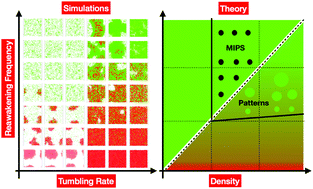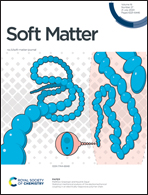Information and motility exchange in collectives of active particles
Abstract
We examine the interplay of motility and information exchange in a model of run-and-tumble active particles where the particle's motility is encoded as a bit of information that can be exchanged upon contact according to the rules of AND and OR logic gates in a circuit. Motile AND particles become non-motile upon contact with a non-motile particle. Conversely, motile OR particles remain motile upon collision with their non-motile counterparts. AND particles that have become non-motile additionally “reawaken”, i.e., recover their motility, at a fixed rate μ, as in the SIS (susceptible, infected, susceptible) model of epidemic spreading, where an infected agent can become healthy again, but keeps no memory of the recent infection, hence it is susceptible to a renewed infection. For μ = 0, both AND and OR particles relax irreversibly to absorbing states of all non-motile or all motile particles, respectively. The relaxation kinetics is, however, faster for OR particles that remain active throughout the process. At finite μ, the AND dynamics is controlled by the interplay between reawakening and collision rates. The system evolves to a state of all motile particles (an absorbing state in the language of absorbing phase transitions) for μ > μc and to a mixed state with coexisting motile and non-motile particles (an active state in the language of absorbing phase transitions) for μ < μc. The final state exhibits a rich structure controlled by motility-induced aggregation. Our work can be relevant to biochemical signaling in motile bacteria, the spreading of epidemics and of social consensus, as well as light-controlled organization of active colloids.



 Please wait while we load your content...
Please wait while we load your content...